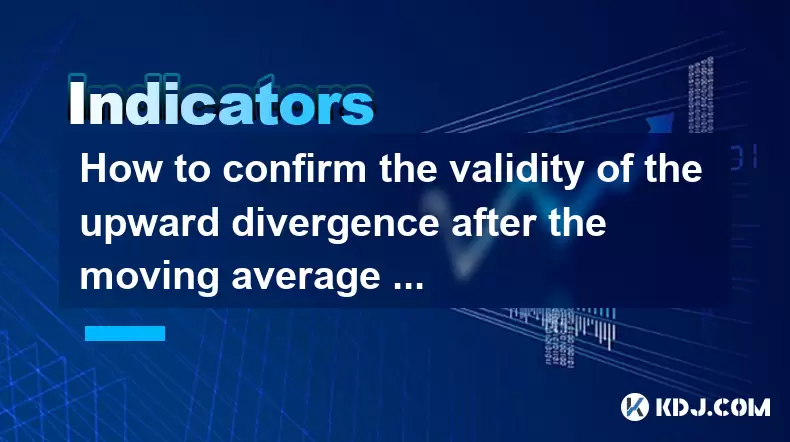-
 Bitcoin
Bitcoin $106,754.6083
1.33% -
 Ethereum
Ethereum $2,625.8249
3.80% -
 Tether USDt
Tether USDt $1.0001
-0.03% -
 XRP
XRP $2.1891
1.67% -
 BNB
BNB $654.5220
0.66% -
 Solana
Solana $156.9428
7.28% -
 USDC
USDC $0.9998
0.00% -
 Dogecoin
Dogecoin $0.1780
1.14% -
 TRON
TRON $0.2706
-0.16% -
 Cardano
Cardano $0.6470
2.77% -
 Hyperliquid
Hyperliquid $44.6467
10.24% -
 Sui
Sui $3.1128
3.86% -
 Bitcoin Cash
Bitcoin Cash $455.7646
3.00% -
 Chainlink
Chainlink $13.6858
4.08% -
 UNUS SED LEO
UNUS SED LEO $9.2682
0.21% -
 Avalanche
Avalanche $19.7433
3.79% -
 Stellar
Stellar $0.2616
1.64% -
 Toncoin
Toncoin $3.0222
2.19% -
 Shiba Inu
Shiba Inu $0.0...01220
1.49% -
 Hedera
Hedera $0.1580
2.75% -
 Litecoin
Litecoin $87.4964
2.29% -
 Polkadot
Polkadot $3.8958
3.05% -
 Ethena USDe
Ethena USDe $1.0000
-0.04% -
 Monero
Monero $317.2263
0.26% -
 Bitget Token
Bitget Token $4.5985
1.68% -
 Dai
Dai $0.9999
0.00% -
 Pepe
Pepe $0.0...01140
2.44% -
 Uniswap
Uniswap $7.6065
5.29% -
 Pi
Pi $0.6042
-2.00% -
 Aave
Aave $289.6343
6.02%
Is it invalid if the DMI crosses but the ADX does not expand?
A DMI crossover without ADX expansion may signal weak trend strength, suggesting cautious trading and need for additional confirmation.
Jun 21, 2025 at 09:35 am

Understanding the DMI and ADX Relationship
In technical analysis, the Directional Movement Index (DMI) consists of two lines: +DI (Positive Directional Indicator) and -DI (Negative Directional Indicator). These indicators are used to determine the direction of a trend. When +DI crosses above -DI, it is often interpreted as a bullish signal, while the opposite—-DI crossing above +DI—is seen as a bearish signal.
However, many traders also look at ADX (Average Directional Index) in conjunction with these crossovers. The ADX line measures the strength of the trend, not its direction. A rising ADX indicates a strengthening trend, while a falling or flat ADX suggests a weak or non-existent trend.
So when the question arises: "Is it invalid if the DMI crosses but the ADX does not expand?", we must examine how these components interact under different market conditions.
Key Insight: A DMI crossover without ADX expansion may indicate a lack of trend strength, even if the directional signal appears valid.
What Does It Mean When DMI Crosses?
A DMI crossover occurs when either +DI crosses above -DI or vice versa. This is typically interpreted as a potential change in price direction. For example:
- If +DI crosses above -DI, it suggests that upward momentum is increasing.
- If -DI crosses above +DI, it signals stronger downward pressure.
Traders often use this as a trigger to enter trades. However, the reliability of such a signal can be questionable if other confirming factors are absent.
Important Note: A DMI crossover alone does not confirm trend validity. It only indicates a shift in directional movement.
Role of ADX in Confirming Trend Strength
The ADX line serves as a filter for determining whether a trend has enough strength to warrant action. Here's how it works:
- An ADX value above 25 generally indicates a strong trend.
- An ADX below 20 suggests a weak or ranging market.
- When ADX is rising, it confirms that the trend is gaining strength.
- When ADX is flat or declining, it implies that the trend is losing steam.
Therefore, if you observe a DMI crossover but see that the ADX is not expanding—meaning it remains flat or declines—it could suggest that the new trend lacks conviction.
Critical Takeaway: ADX expansion is crucial to validate the strength behind a DMI crossover signal.
Why a Non-expanding ADX Undermines the DMI Signal
Imagine a scenario where +DI crosses above -DI, suggesting bullish momentum. However, the ADX line is flat or even declining. In this case:
- The directional indicator shows a positive shift, but the trend strength is not increasing.
- This divergence may indicate that the move lacks participation from larger players or institutional traders.
- It might result in a false breakout or a short-lived rally followed by a quick reversal.
This situation is common during consolidation phases or before major news events when markets are indecisive.
Practical Observation: A DMI crossover without ADX expansion should be treated cautiously, especially in volatile crypto markets.
How to Approach Trading in Such Scenarios
If you encounter a DMI crossover while ADX is flat or declining, consider the following steps:
- Wait for confirmation: Look for additional signs like volume spikes, candlestick patterns, or support/resistance breaks.
- Use multiple timeframes: Check higher timeframes (e.g., 4H or daily) to see if the ADX is showing strength there.
- Combine with other indicators: Use RSI or MACD to gauge overbought/oversold levels or momentum shifts.
- Adjust your risk: If you decide to trade, reduce position size or set tighter stop-loss orders.
These strategies help manage the uncertainty that comes with a DMI signal lacking ADX support.
Effective Strategy: Always filter DMI signals with ADX readings and corroborate with other tools before entering a trade.
Frequently Asked Questions
Q: Can I ignore ADX and just use DMI for trading crypto assets?
While possible, doing so increases the likelihood of acting on false signals. ADX adds context about trend strength, which is critical in volatile crypto markets.
Q: What ADX level should I consider as a valid threshold?
Many traders use 20 or 25 as thresholds. Below 20, the trend is considered weak; above 25, it’s gaining strength. However, this can vary depending on the asset and timeframe.
Q: Is it possible for ADX to rise after a DMI crossover?
Yes, sometimes ADX starts rising slightly after the crossover, indicating delayed strength. In such cases, traders may re-enter or hold positions based on follow-through.
Q: How reliable is the DMI in sideways crypto markets?
DMI tends to generate many false signals in ranging markets due to frequent crossovers. It performs best in trending environments, especially when combined with ADX filtering.
Disclaimer:info@kdj.com
The information provided is not trading advice. kdj.com does not assume any responsibility for any investments made based on the information provided in this article. Cryptocurrencies are highly volatile and it is highly recommended that you invest with caution after thorough research!
If you believe that the content used on this website infringes your copyright, please contact us immediately (info@kdj.com) and we will delete it promptly.
- BONK, Ethereum, and AI Utility: A New Era?
- 2025-06-21 12:25:12
- Bitcoin Price Prediction: Will BTC Bounce Back or Break Down?
- 2025-06-21 12:25:12
- BONK Price Prediction: Will the Meme Coin Rebound?
- 2025-06-21 12:30:12
- Bitcoin's $100K-$110K Range: Short Interest Heats Up!
- 2025-06-21 12:45:12
- CoinMarketCap Under Fire: Wallet Scam Highlights Malicious Activity
- 2025-06-21 12:45:12
- Bitcoin, Hedge Funds, and Eric Semler: A Wall Street Waltz?
- 2025-06-21 10:45:11
Related knowledge

Does the sudden contraction of ATR indicate the end of the trend?
Jun 20,2025 at 11:14pm
Understanding ATR and Its Role in Technical AnalysisThe Average True Range (ATR) is a technical indicator used to measure market volatility. Developed by J. Welles Wilder, ATR calculates the average range of price movement over a specified period, typically 14 periods. It does not indicate direction—only volatility. Traders use ATR to gauge how much an ...

Is it invalid if the DMI crosses but the ADX does not expand?
Jun 21,2025 at 09:35am
Understanding the DMI and ADX RelationshipIn technical analysis, the Directional Movement Index (DMI) consists of two lines: +DI (Positive Directional Indicator) and -DI (Negative Directional Indicator). These indicators are used to determine the direction of a trend. When +DI crosses above -DI, it is often interpreted as a bullish signal, while the opp...

Is the trend continuation when the Williams indicator is oversold but there is no rebound?
Jun 20,2025 at 11:42pm
Understanding the Williams %R IndicatorThe Williams %R indicator, also known as the Williams Percent Range, is a momentum oscillator used in technical analysis to identify overbought and oversold levels in price movements. It typically ranges from 0 to -100, where values above -20 are considered overbought and values below -80 are considered oversold. T...

Is the golden cross of the ROC indicator below the zero axis effective?
Jun 20,2025 at 09:42pm
Understanding the ROC Indicator and Its Role in Cryptocurrency TradingThe Rate of Change (ROC) indicator is a momentum oscillator widely used by traders to assess the speed at which cryptocurrency prices are changing. It measures the percentage difference between the current price and the price from a certain number of periods ago. The ROC helps identif...

How to confirm the validity of the upward divergence after the moving average sticks together?
Jun 21,2025 at 01:36am
Understanding the Basics of Moving Averages and DivergenceIn technical analysis, moving averages are crucial tools used to smooth out price data over a specified time period. When multiple moving averages converge or 'stick together,' it often indicates a consolidation phase in the market. This phenomenon can be a precursor to significant price movement...

What should I do if the KD indicator crosses in the oversold zone but the rebound is weak?
Jun 21,2025 at 07:07am
Understanding the KD Indicator and Its Role in Crypto TradingThe KD indicator, also known as the stochastic oscillator, is a momentum-based technical analysis tool commonly used in cryptocurrency trading. It consists of two lines — the %K line and the %D line — that fluctuate between 0 and 100. The primary function of this indicator is to identify overb...

Does the sudden contraction of ATR indicate the end of the trend?
Jun 20,2025 at 11:14pm
Understanding ATR and Its Role in Technical AnalysisThe Average True Range (ATR) is a technical indicator used to measure market volatility. Developed by J. Welles Wilder, ATR calculates the average range of price movement over a specified period, typically 14 periods. It does not indicate direction—only volatility. Traders use ATR to gauge how much an ...

Is it invalid if the DMI crosses but the ADX does not expand?
Jun 21,2025 at 09:35am
Understanding the DMI and ADX RelationshipIn technical analysis, the Directional Movement Index (DMI) consists of two lines: +DI (Positive Directional Indicator) and -DI (Negative Directional Indicator). These indicators are used to determine the direction of a trend. When +DI crosses above -DI, it is often interpreted as a bullish signal, while the opp...

Is the trend continuation when the Williams indicator is oversold but there is no rebound?
Jun 20,2025 at 11:42pm
Understanding the Williams %R IndicatorThe Williams %R indicator, also known as the Williams Percent Range, is a momentum oscillator used in technical analysis to identify overbought and oversold levels in price movements. It typically ranges from 0 to -100, where values above -20 are considered overbought and values below -80 are considered oversold. T...

Is the golden cross of the ROC indicator below the zero axis effective?
Jun 20,2025 at 09:42pm
Understanding the ROC Indicator and Its Role in Cryptocurrency TradingThe Rate of Change (ROC) indicator is a momentum oscillator widely used by traders to assess the speed at which cryptocurrency prices are changing. It measures the percentage difference between the current price and the price from a certain number of periods ago. The ROC helps identif...

How to confirm the validity of the upward divergence after the moving average sticks together?
Jun 21,2025 at 01:36am
Understanding the Basics of Moving Averages and DivergenceIn technical analysis, moving averages are crucial tools used to smooth out price data over a specified time period. When multiple moving averages converge or 'stick together,' it often indicates a consolidation phase in the market. This phenomenon can be a precursor to significant price movement...

What should I do if the KD indicator crosses in the oversold zone but the rebound is weak?
Jun 21,2025 at 07:07am
Understanding the KD Indicator and Its Role in Crypto TradingThe KD indicator, also known as the stochastic oscillator, is a momentum-based technical analysis tool commonly used in cryptocurrency trading. It consists of two lines — the %K line and the %D line — that fluctuate between 0 and 100. The primary function of this indicator is to identify overb...
See all articles

























































































